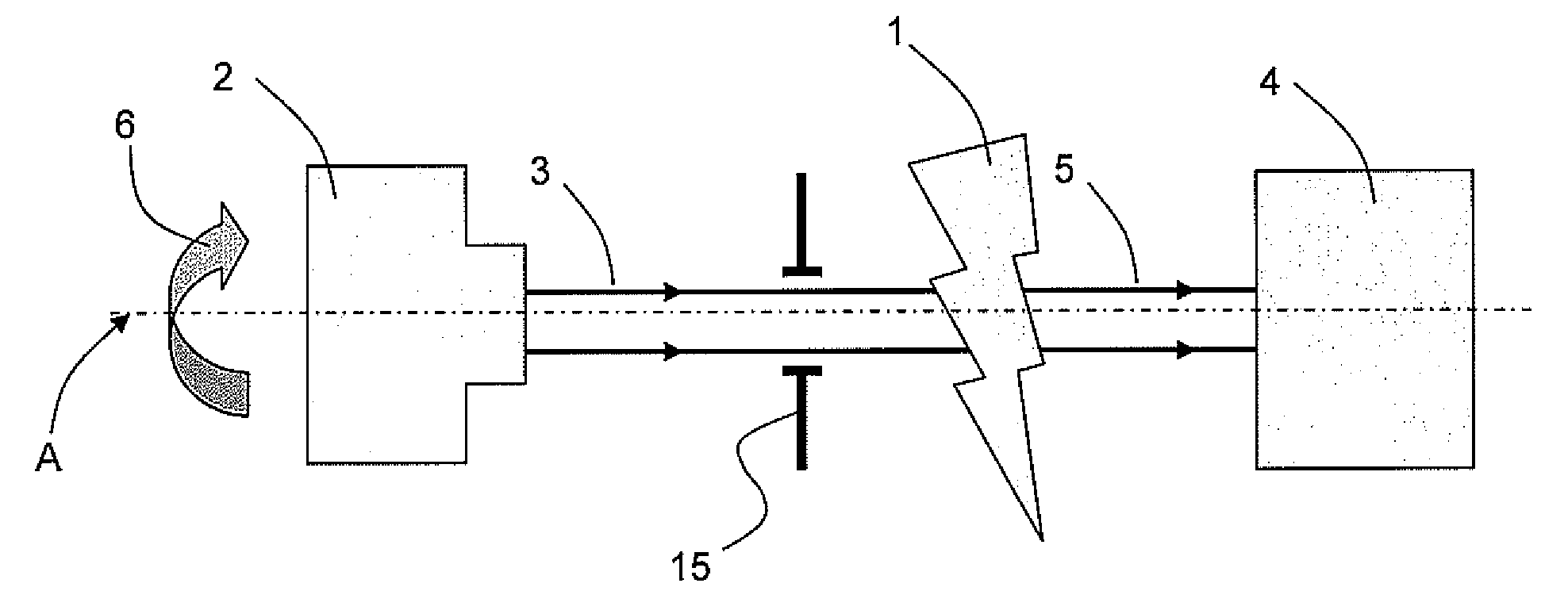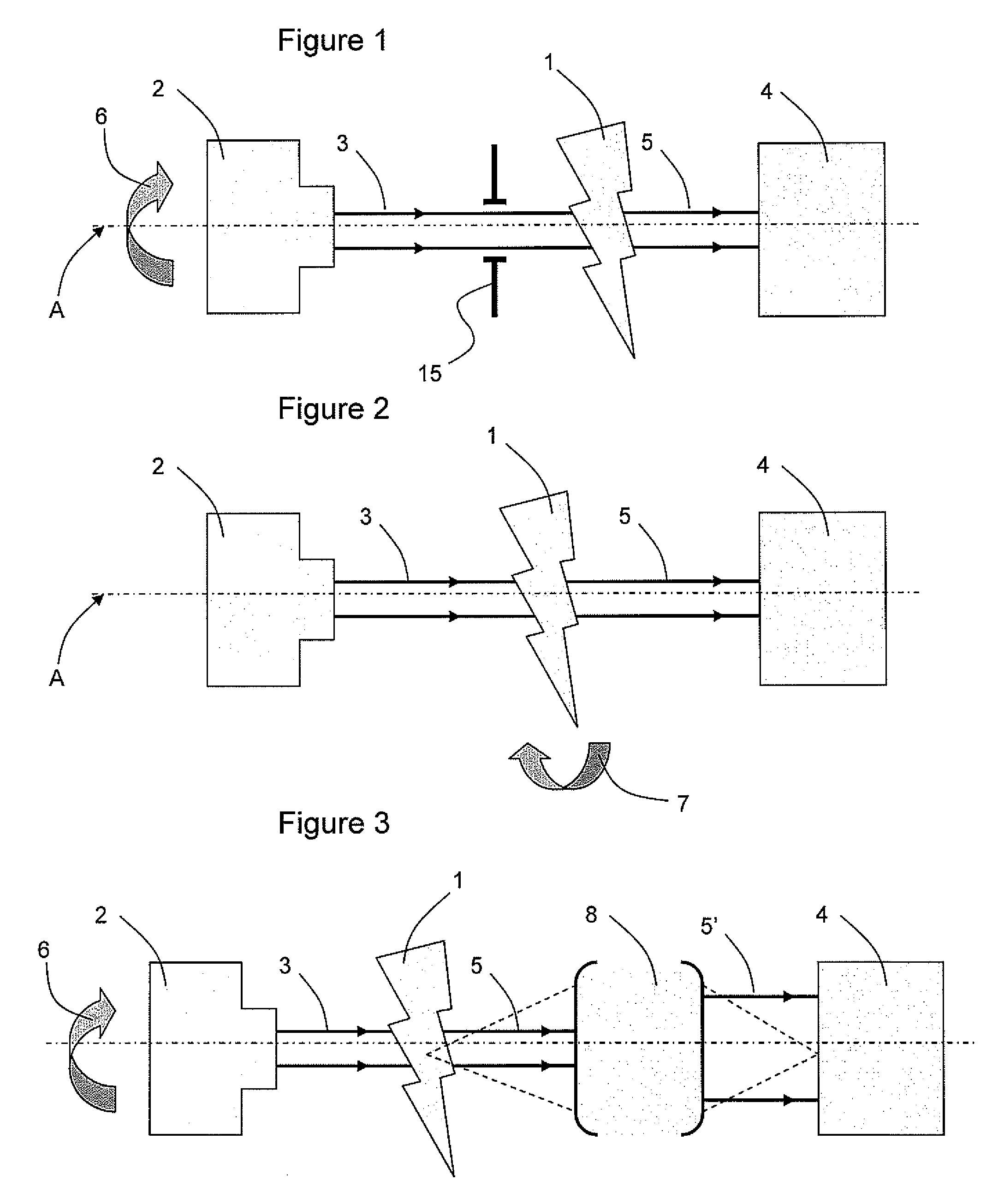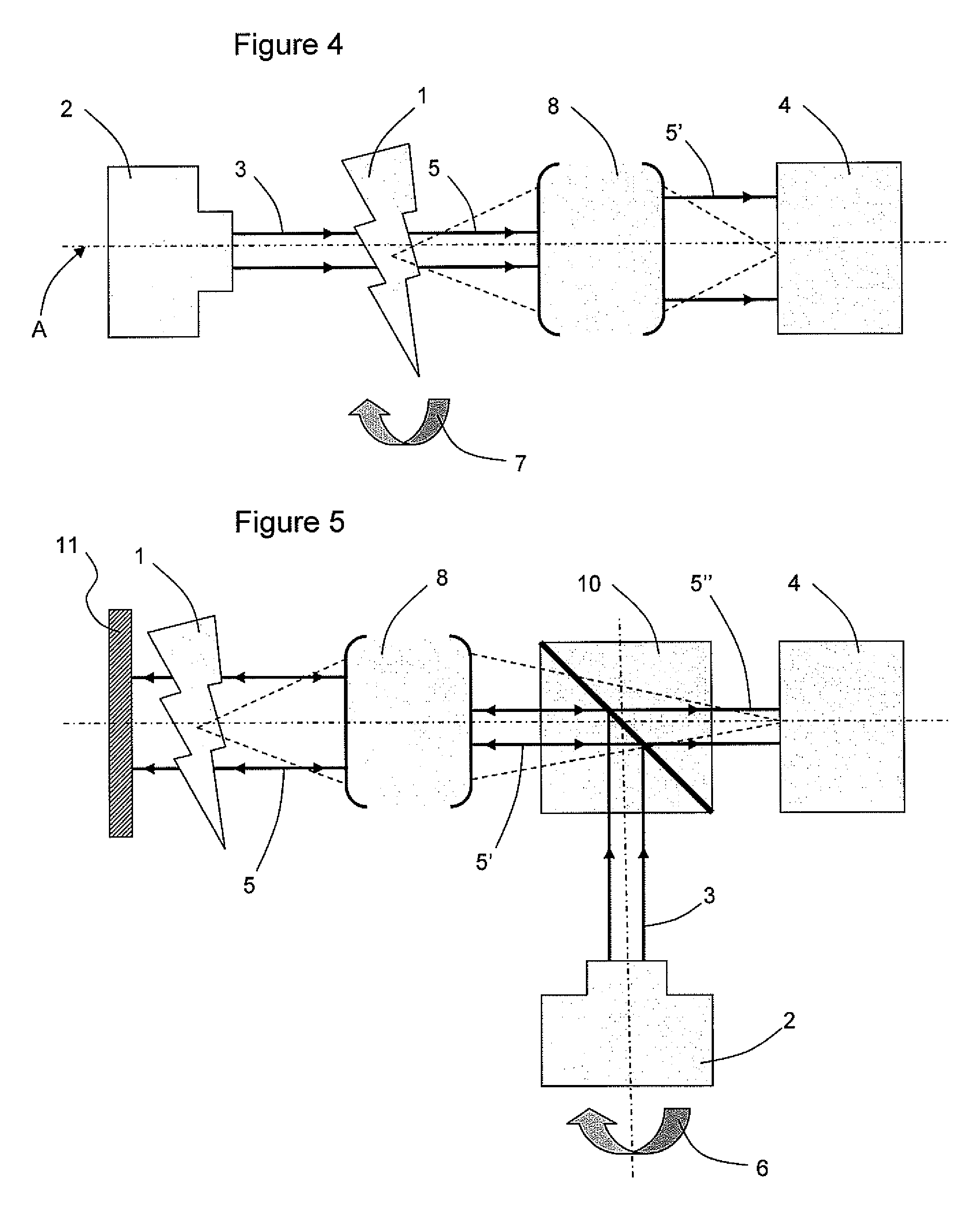Method and system for structural analysis of an object by measuring the wave front thereof
a technology of wave front and wave front, applied in the field of structural analysis of objects, can solve the problems of inability to extract inability to be compatible with in vivo observations of biological tissues, and inability to achieve phase information of the field diffracted by the obj
- Summary
- Abstract
- Description
- Claims
- Application Information
AI Technical Summary
Benefits of technology
Problems solved by technology
Method used
Image
Examples
first embodiment
[0056]In reference to FIG. 1, a structural analysis system according to the invention includes means 2 for generating an input light beam 3. This light beam is directed onto a portion of the object 1 to be analysed. Receiving means 4 enable the output light beam 5, resulting from the interaction between the input beam 3 and the object 1, to be recovered.
[0057]The object 1 is the subject of the tomographic analysis. The objective is, in this case, to reconstruct this object three-dimensionally, by an optical transmission measurement, according to a three-dimensional tomographic optical microscopy principle. This method is intended to provide a dimensional characterisation of the object or sample, via a preliminary measurement of its shape and permittivity distribution, with quantitative measurement results.
[0058]The object 1 is, in this case, an object having some transparency, so that the receiving means 4 can recover a portion of the light flux generated by the means 2 after intera...
second embodiment
[0081]In the second embodiment, in reference to FIG. 2, the means 2 for generating the incident beam 3 are fixed so that the beam 3 is parallel to the optical axis. The means for orienting the interaction 7 are now the means for rotating the sample with respect to the optical axis A. Since the source 2 is arranged so that the incident beam 2 is perpendicular to the optical axis, a tilt of the incident beam 3 with respect to the surface of the sample is derived therefrom, as it is seen by the analyser 4.
[0082]In the third embodiment, in reference to FIG. 3, the means for orienting the interaction 6 are identical to those of the first embodiment. The means 8 for optical conjugation are arranged between the object 1 and the receiving means4. These means 8 include a lens assembly, in order to conjugate the surface of interaction of the object 1 with the plane of the sensor integrated with the wavefront analyser 4, thereby notably improving the measurement results.
[0083]In the fourth emb...
eighth embodiment
[0092]The eighth embodiment, in reference to FIG. 8, presents the case in which the object is entirely reflective and does not therefore have any transparency. In this case, it, by itself, constitutes the reflective element and it is not necessary to use a mirror in order to produce the back-reflection (as described above in reference to FIG. 5). The measurement obtained is then a surface topology.
[0093]More specifically, the source 2 is arranged in order to direct the incident beam 3 that it generates in the direction of the reflective object 1. Means 6 for orienting this source 2 make it possible to cause the angle of incidence of the beam 3 on the surface of the object 1 to be varied. Therefore, the diffracted and reflected beam 5, resulting from the interaction between the beam 3 and the object 1, is received by the receiving means integrating the wavefront analyser 4. For this, the source 2 and the sensor 4 must be on the same side of the object 1. One option thus consist of ti...
PUM
 Login to View More
Login to View More Abstract
Description
Claims
Application Information
 Login to View More
Login to View More - R&D
- Intellectual Property
- Life Sciences
- Materials
- Tech Scout
- Unparalleled Data Quality
- Higher Quality Content
- 60% Fewer Hallucinations
Browse by: Latest US Patents, China's latest patents, Technical Efficacy Thesaurus, Application Domain, Technology Topic, Popular Technical Reports.
© 2025 PatSnap. All rights reserved.Legal|Privacy policy|Modern Slavery Act Transparency Statement|Sitemap|About US| Contact US: help@patsnap.com



